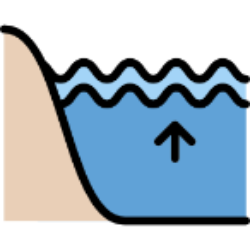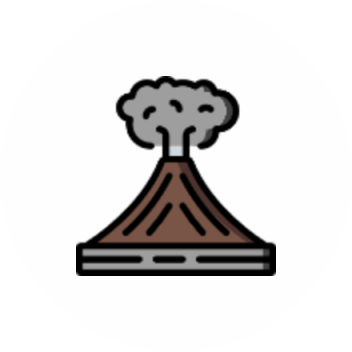Environmental changes












Migration types
Perspective/retro perspective






American Migrants: Monarchs and the Immigrant Rights Movement During the 21st Century

Cross-border migration
Details of the historical case
In December of 2018, as the United States Supreme Court ruled that the Trump administration could bypass the Endangered Species Act and the Clean Air Act in constructing a border wall through a butterfly sanctuary near the Rio Grande River in southern Texas, it became increasingly apparent that the political and the ecological are not easily demarcated. “Border walls are death sentences for wildlife and humans alike,” Amanda Munro of the Southwest Environmental Center explained in the wake of this ruling. “They block wild animals from accessing the food, water, and mates they need to survive. They weaken genetic diversity, fragment habitat, and trap animals in deadly floods. At the same time, they drive desperate asylum seekers to risk their lives in the unforgiving desert” (Gilbert). Indeed, in the United States in the early decades of the 21st century, as sanctuary cities and wildlife sanctuaries came under siege, as xenophobia and fears of racial diversity weakened federal legislation designed to preserve ecological diversity, people and butterflies traversing the southern border of the United States confronted common challenges. During this period, the monarch butterfly emerged as a symbol of the Immigrant Rights Movement, a visual means of representing what Sarah Wald calls “a mode of political belonging situated outside of the nation-state.” The monarch, Danaus plexippus, has proven a salient symbol in immigration activism because the species—over multiple generations—completes an annual migration of more than 3,000 miles across the Americas. The butterflies overwinter in central Mexico, congregating in oyamel fir trees to maintain a viable temperature range. “The tree canopy and ecosystem provide a blanket effect for the monarchs, so the temperatures don’t go too high or too low,” explains Pablo Jaramillo-López, a biologist at the National Autonomous University of Mexico. In early spring, as temperatures climb, these monarchs move north, a caravan of butterflies crossing the U.S.-Mexico border to mate and lay eggs on milkweed plants in the southern United States. Over the course of four or five generations, the species completes its journey to Canada. As temperatures drop and sources of milkweed diminish, a “super generation” of monarchs catches an air current all the way back to Mexico, surviving up to eight months (Bittel). As the artist and activist Faviana Rodriguez notes in the documentary Migration Is Beautiful, monarchs “go in certain seasons and they return in others, very similar to what workers do, they go when it’s the harvest and they come back when it’s not.” This annual migration has laid the groundwork for transnational collaborations. In addition to professional researchers who monitor monarch populations and movement, monarchs are tracked by citizen scientists who notice butterflies arriving in their backyards. For example, the schoolchildren participating in Journey North, a transnational phenological database, log their sightings into a digital map that allows viewers to visualize the butterflies’ migration. This phenological project edges into the symbolic: in the fall, students around the world craft monarch butterflies with paper and crayons, enclose them in letters that they mail to students in central Mexico, and then wait for spring when the butterflies are mailed back along with replies from their winter keepers. Moreover, when ecological threats caused the monarch population to decline, scientists and writers and artists across the Americas joined forces to protect the insects, signing a petition to President Barack Obama, President Enrique Peña Nieto and Prime Minister Stephen Harper (see the section on policy response). However, logging and increased herbicide use are far from the only environmental factors threatening the monarch population. As climate change shifts seasonal patterns, causing spring to arrive prematurely in Texas and other southern states, the monarch migration is thrown into turmoil: monarchs arrive well before milkweed becomes available, leaving butterfly populations stranded without a food source (Madson). In 2016, the U.S. Fish and Wildlife Service reported that increasing extreme weather events also put the monarch at risk: in 2004, a severe storm killed almost 80% of the monarchs overwintering in Mexico, and in 2012, as the midwestern United States underwent an unusual drought and heatwave, monarchs reproduced at a lower rate. The monarch’s shifting range and increasing vulnerability is depicted in Barbara Kingsolver’s novel Flight Behavior, in which a flock of fictional butterflies veers off course in a changing climate and overwinters in rural Tennessee, thereby drawing a Caribbean entomologist conducting fieldwork on monarchs into conversations about climate change with the local community. These same climatic changes impact human migration across the Americas. Although human migration is driven by multiple interrelated factors—including political unrest and economic disparities—droughts and unstable agricultural yields in Central America exacerbate precarity in already vulnerable communities, contributing to northward migration (Aton). The Central American Dry Corridor—which runs through Mexico, Guatemala, El Salvador, Honduras, and Nicaragua—is acutely affected by the increasing frequency and intensity of drought and flooding in recent years (Vaqué). Without sufficient historical meteorological data, National Geographic notes, attributing recent climatic trends in the Dry Corridor to anthropogenic climate change rather than El Niño variation is difficult, but Edwin Catellanos, who directs the Center for the Study of the Environment and Biodiversity at the Universidad del Valle in Guatemala, explains, “If you go out to the field and ask anybody if this is normal, everybody says no” (Steffens).
Actors involved
Monarch butterflies; Immigrant Rights activists; Grupo de los Cien; DREAMers; U.S. Immigration and Customs Enforcement (ICE); the Trump administration.
Policy response
DREAM Act, DACA, petition filed to protect the monarch under the Endangered Species Act, political use of the image of the Monarch Butterfly During these years of climate instability across the Americas, the border between the United States and Mexico has become increasingly politicized. Estimates of people residing in the United States without legal documentation in the early 21st century vary widely: estimates based on census data often hover around 11.3 million people, but a report published in 2018 suggests that 16.2 to 29.5 million undocumented immigrants may be a more realistic count (Fazel-Zarandi et al). Immigration and Customs Enforcement, commonly referred to as ICE in the United States, routinely deports people unable to produce documents: between 1996 and 2015, almost 5.4 million deportations were carried out (Ambrosius). Additionally, in 2001, the United States Congress voted down the Development, Relief and Education for Alien Minors (DREAM) Act, which was drafted to provide people who entered the United States without papers before the age of eighteen (known as the Dreamers) with conditional resident status, and then, following either higher education or military service, permanent resident status. This act was reintroduced and repeatedly failed to pass, but in 2012, the Deferred Action for Childhood Arrivals (DACA) program achieved similar aims. In 2017, after 787,580 Dreamers had been approved for deportation deferment, President Trump’s administration announced the cancellation of DACA (Walters). This announcement, in combination with President Trump’s cries to expand and fortify the wall between the United States and Mexico, escalated anti-immigrant and white supremacist rhetoric as well as immigrant rights activism in the United States. In the midst of this political landscape, the monarch gained power and wide recognition as a symbol of the Immigrant Rights Movement. Sarah Wald, the literary scholar who has written most extensively on this topic, observes that the monarch symbolically “disrupts the naturalization of the nation-state as the arbiter of rights and suggests a form of political belonging rooted in mobility and transformation” (210). According to Wald, the monarch image gained recognition in 2012 as the UndocuBus, a repurposed school bus painted with orange-and-black butterflies and the caption “Sin Papeles Sin Miedo,” was driven by a group of undocumented activists to the Democratic National Convention in Charlotte. In Chicago in 2017, posters bearing a monarch image with a clenched fist as a thorax and the caption “We Support Immigrants” appeared in storefront windows along 47th Street and Ashland Avenue. Designed by Luis Rafael, who crossed the U.S.-Mexico border with his parents at the age of three, the posters—which also contained the phone numbers of immigration attorneys and advice for interacting with Immigration and Customs Enforcement agents—symbolized support for the neighborhood’s undocumented residents (Miller). Moreover, monarchs frequently grace signs carried in marches for immigrant rights, often accompanied by phrases like “Let Me Roam Free” (Haro). Perhaps most notably, a banner designed by Rosario Gonzalez for the People’s Climate March in New York City in 2014 featured a monarch and the phrase “Climate Change Affects Us All; El Cambio Climatico Afecta Todos” (Wald). Carried by immigrant rights activists, it highlighted the common right of insects and humans to cross borders in an age of anthropogenic climate change. In 2014, Grupo de los Cien Internacional, an environmental advocacy organization founded by the Mexican poet Homero Aridjis, wrote to President Barack Obama, President Enrique Peña Nieto and Prime Minister Stephen Harper to advocate for transnational monarch conservation efforts. The letter, signed by an impressive array of international writers, explained that increasing herbicide use on genetically modified corn and soybean crops was impacting the milkweed population, a trend that was only worsening as ethanol production altered land use patterns in the United States and transformed fallow fields into further cropland. In combination with small-scale logging in Mexico’s oyamel fir forests, the letter continued, these ecological conditions had reduced the monarch population by 90%. Grupo de los Cien argued for transnational passage: “A milkweed corridor stretching along the entire migratory route of the monarch butterfly through our three countries must be established.”
Dust Bowl in 1930s, Midwest, United States of America

Domestic, Rural-rural and rural-urban migration
Details of the historical case
According to environmental historian Donald Worster, “the Dust Bowl was the darkest moment in the twentieth-century life of the southern plains”. In his book, which has become a classic in environmental history, Worster reconstructs the causes and effects of the Dust Bowl, providing the perfect template for studies on environmental disruption and migrations. Worster’s approach is an inspiration for everybody who wishes to think about climate/environmental changes and migrations beyond a deterministic perspective. The expression “Dust Bowl” refers to the sandy blizzards which starting in 1930 hit approximately 400,000 km2 (100,000,000 acres) of land in Texas, Oklahoma, New Mexico, Colorado, and Kansas. Although with various intensity, the combination of drought and soil erosion persisted in the Great Plains for the entire decade. According to some estimate, between 300 and 400 thousands people left the areas affected by the Dust Bowl, migrating mainly towards California. As always with this kind of disasters, one is left with the usual question: was it a “natural” event? Or, in other words, who is to be blamed for what occurred? The Dust Bowl is an excellent case study because it forces us to think socio-ecologically, that is, avoiding mono-causal explanations. On one hand, it is clear that blizzards and the drought were natural phenomena, extremely common in the Great Plains. After all, Dorothy Gale, the protagonist of the Wizard of Oz, was taken away, together with her house, by a violent tornado; there was nothing unnatural about living with storms on the Kansas Prairies. Also the drought was quite normal on the Great Plains, as the archeological and historical evidences have clearly proved. Thus, the socio-environmental change was neither the drought nor the blizzard, rather the introduction on the Great Plains of mechanized, capitalistic agriculture on a vast scale. This changed the ecology of the Plains, eliminating the grass, which was holding the soil together. One of the Dust Bowl’s most dramatic effects was the migration of hundreds of thousands of impoverished farmers who left their lands trying to relocate mainly to California. The data are not precise, but several sources speak of 300 or 400 thousand Dust Bowl’s refugees. Running away from prolonged drought and deadly blizzards, those people could easily be considered as “the textbook” example of climate change migrants. Instead, an in-depth analysis of the Dust Bowl history shows that environmental changes are always also social and economic changes; thereby, those were climate as well as economic refugees, escaping the harshness of the drought and that of the banks with which they were indebted.
Actors involved
US Federal Government, Ad Hoc Agencies, Banks, Local Authorities, Farmers, Scientists, Artists.
Policy response
The Dust Bowl lasted, although with various intensity, for a decade, therefore, it was addressed by different governments with different political agenda. At the beginning, under the presidency of Republican Herbert Clark Hoover free market was considered the best antidote to the Dust Bowl crisis. The basic assumption was that free market would have adjusted the Dust Bowl. With the election of Democratic president Franklin Delano Roosevelt, the approach to the Dust Bowl changed drastically, shifting towards a planned intervention both in terms of emergency reliefs and long-term management of the Great Plains. According to McLeman, Dupre, B. Ford, J. Ford, Gajewski and Marchildon (2014), “An important outcome of the 1930s socio-ecological crisis on the Great Plains was a greatly expanded participation of government in land management and soil conservation” (429). The intervention of the Federal Government went in multiple directions. There were measures directed to train farmers and propagate more ecologically sustainable practices (for instance, through the Soil Conservation Service). The US Forest Service created a tree belt to reduce soil erosion. The Works Progress Administration invested in infrastructures including dams and roads. Those are some of the measures developed during Roosevelt’s presidency: • Resettlement Administration & Farm Security Administration > to improve the life conditions of farmers (including the creation of Relief Camps) • Bureau of Agricultural Economics > to buy land in order to put them into permanent vegetative cover under federal stewardship • Agricultural Adjustment Program > to pay the farmers for not planting their crops • The Soil Conservation Service > to develop agricultural projects directed to protect the soil (mainly tree plantation) While most of the policy measures listed above were directed towards limiting soil erosion, nonetheless, federal and state governments had to manage also the impressive flux of refugees leaving the Great Plains. The establishment of temporary shelters was the crucial measure implement by both state and federal agencies. By the end of the 1930s, almost 45 thousand Dust Bowl migrants lived in those “sanitary” camps, provided with some basic services such as water and community spaces (Babb 2007, 22). However, they were just a small fraction of the probably 400 thousand migrants who escaped from the Dust Bowl (Babb 2007, 23). The large majority lived in irregular and self-managed encampments along the roads or the train tracks, without any kind of service and support. Nonetheless, some residents of California, especially landowners, opposed to the creation of the “sanitary” camps, arguing that they would have encouraged more people to migrate, serving as a breeding ground for Communist activists (Babb 2007, 25). Scholars have divergent opinions on the results of those policies. For some they were excessive and met the hostility of the local farmers, while others have a more positive opinion of the social and ecological results achieved through those measures. There is, instead, a larger consensus on the positive outcomes of those policies in terms of research, knowledge production and dissemination. For instance, those measures led to new technologies for monitoring soil erosion and to new farming practices (McLeman, Dupre, B. Ford, J. Ford, Gajewski and Marchildon 2014, 431). In this respect, the effects of the policy interventions for the Dust Bowl went beyond the US borders becoming influential on the struggles against soil erosion on a global level. It is worth mentioning that the policies developed to address the Dust Bowl emergency included a cultural mobilization with photographers and writers to inform the public about migrants’ harsh conditions. The Farm Security Administration, for instance, sponsored a large photograph project on the Dust Bowl’s refugees.
Facing Climate Change in the Extreme North. The Ongoing Climate-forced Relocation of Alaska’s coastal and insular villages (1950s-2019)

Domestic and Rural-rural migration
Details of the historical case
The Native village of Shishmaref is located Sarichef Island in the Chukchi Sea, north of the Bering Strait and 5 miles distant from mainland Alaska. The local population of around 600 people are mainly Inupiat Native Alaskan, who for centuries have practiced a subsistence-based lifestyle, hunting marine and land mammals and berry picking. The residents of the island have witnessed erosion on Sarichef since the 1950s. However, due to the recent rising temperatures of sea and climate, the sea ice pack, which functions as a buffer for the island, otherwise exposed to severe storm surges, has started to melt at an unprecedented pace. This lack of a natural barrier, together with the island’s permafrost, have resulted in an extremely rapid loss of 3 to 5 feet of shoreline per year. Since 1969, erosion has eaten away over 200 feet of shoreline. Considering that the island is 3 miles long and ¼ mile- wide, this is a dramatic reduction in size, therefore, very strongly perceived by the inhabitants. The inhabitants have tried to build more barriers and new forms of defense from storms, hoping to prevent erosion. Yet they could not control this phenomenon, which begun to damage local streets, water infrastructure, sanitation lagoons, and eventually a number of homes, which were literally swallowed by the ocean. In 2002 Shishmaref voted to relocate their community to a new site on the mainland called Tin Creek. This is not an exceptional situation. Already in 2003, the US Government Accountability Office studied the effects of rising temperatures on the Alaskan villages in terms of flooding and erosion. According to the same office, in 2009 twelve villages were considering to relocate (Norwegian Refugee Council 2017, 9). However, with a lack of funding and melting permafrost at the proposed site, this plan to relocate never came to fruition. After over a decade of inaction, on August 16th, 2016 the City Council of Shishmaref again held a vote to either relocate the village to one of two nearby sites or to insist and try new ways to protect its original place. In a narrow margin, the vote to relocate passed 94–78 votes. While the move to a new site still has several more steps, including a second vote to decide which site to move to and finding the resources for financing the relocation, the story-telling of their decision has featured on major anglophone media (New York Times, Guardian, etc.), and was widely discussed by advocates of climate migrants’ rights, also at the UN headquarters in Geneva. In 2016, President Barack Obama campaigned himself for climate action to save the coastal villages of Alaska. In fact, several other maritime communities in the region are suffering similar conditions. For instance, the villages of Netwok and Kivalina have been going through similar processes and have come up with concrete plans to relocate.
Actors involved
US Federal Government, Former US President Obama, Local Authorities, Hunters’ community, Legal/ Human Rights/ Climate Scientists, Alaska Institute for Justice, Mediators.
Policy response
The Native American and Native Alaskan representatives were the strongest advocates of Shishmaref and other coastal village communities facing similar issues, such as Netwok or Kivalina. For instance, being present and speaking up at the international climate change negotiations, COP21, in Paris, France, and other circumstances, such as an Indigenous Press Conference, titled “Demanding True Climate Solutions”. Moreover, the Inuit Circumpolar Council, and its Permanent Participant seat on the Arctic Council, provide a means to voice dissent, concerns, and expertise for the residents of vulnerable communities across Alaska in official governance forum. In December 2016, the White House Council on Environmental Quality hosted a Symposium on Climate Displacement, Migration and Relation in Honolulu, Hawai’i, to launch a platform “for stakeholders, researchers, policy experts, indigenous leaders, and local, state, and federal government officials to explore legal and policy opportunities and challenges from climate displacement”. The challenges to realize the planned relocation are massive, since there are barely any precedents in the records and the communities have been deemed “America’s first Climate Refugees” by much of the media. While in the last few years the community has mainly focused on relocation, massive efforts have also been devoted to mitigation and adaptation measures. According to the US Government Accountability Office, about 16 million dollars have been invested in building various infrastructures for shoreline protection (Norwegian Refugee Council 2017, 10). Yet, one third of the village is exposed to major damages. At the state level, the government of Alaska has instituted two organisms for tackling climate change: the Alaska Climate Change Sub-Cabinet, established in 2007, and the Alaska Climate Change Mitigation Program (ACCMP), in 2008. The Alaska Climate Change Sub-Cabinet created an Inter-governmental Alaska Working Group (IAWG) with the mission to identify the most urgent threats caused by climate change. Although the IAWG provided valuable contributions to policymakers (with reports and reccomantions), it was discontinued in 2009 with the election of a new governor (Norwegian refugee Council 2017, 13).
Droughts and rural urban migration: Northeastern Brazil in 1930s

Rural-urban migration
Details of the historical case
In the Brazilian semiarid region, there have been prolonged droughts throughout its history because of an irregular rainfall regime. This region is characterized by high susceptibility to desertification, and is still affected by an intense anthropization process. In particular, the region is interested by salinization, deforestation for pasture, erosion and silting processes. Thus, this is one of the most vulnerable areas to climate change in Brazil. The drought is present periodically in the Brazilian semiarid region, and depending on its intensity, modifies the structure of subsistence agriculture, which is the base of familiar organization. The great droughts in the Brazilian semi-arid region caused the migration to urban centers in the Northeast as well as all over Brazil. In this case study, I will focus on the 1932 drought in the State of Ceara. This drought offers an example of the relationships between public power, migrants and socio-environmental disasters. In particular, this case study reveals the repressive apparatus employed by the state in order to control migrants’ flows and prevent them to reach the urban areas. After the second half of the 19th century, the corollaries of the droughts occurring in the region, that is, hunger, misery and the search for new areas where to move, became a “problem” for the elites of Fortaleza, the capital of the state of Ceará. This happened because of the intensity of the droughts occurred in the years 1877, 1915 and 1932, but especially because of the influx in the city capital of the retirantes (local term that refers to the person or group that leaves their land because of the drought). The arrival of the retirantes made evident to the local elites the dramatic effects of the drought on poor people in the countryside. The waves of migrants from Sertão to the capital of the state began to increase in April of 1932 after the drought intensified (it is important to remember that the term Sertão, used since the colonial period, refers to any rural region, remote from urban centers). Thousands of migrants ran from the drought through the roads and railways with the goal of arriving to Fortaleza despite the governmental efforts to stop this migration. Differently from the droughts in the 19th century, the railways were one of the main ways for retirantes’ migration. According to Kênia Sousa Rios, one of the most important historians of this subject, the concentration camps built by the state to imprison the migrants were strategically placed next to the train stations (RIOS, 2001). Another specificity of the 1932 drought in respect to those of the 19th cent. was the role of the press which became a significant tool to inform and mobilize public opinion about the suffering of the retirantes. The migrants were used as cheap labour in the construction of the city of Fortaleza, since the historical droughts of the 19th century, and things did not change with the 1932 drought. The emergency was used to raise funds for remodelling the city. A master plan and an attitude code were formulated in order to modernize the circulation of goods through the railways and the port. The sun, feared by the migrants of the drought, was also a symbol of the tourist propaganda. It was clear that the drought did not affect everybody in the same way. This dichotomy was visible in the streets of the city, which were “a stage for misery and luxury” (RIOS, 2001). The insufficient rainfall regime year after year intensified the drought. With the death of the fauna and the flora, survival in the Sertão became impossible, leaving migration as the last resource. Instead of addressing the disastrous effects of the drought, the government opted to control the influx of migrants in the city capital through the creation of concentration camps. Few criticized this strategy in the newspapers, recollecting the negative experience of the 1915 drought when the internment camps became the locus of terrible epidemics. Clearly, this kind of criticism was mostly referring to ineffective administration and non-utilization of the possible cheap labour. In 1932, the concentration camps hosted 6507 people in Ipu, 1800 in Fortaleza, 4542 in Quixeramobin, 16221 in Senador Pompeu, 28648 in Cariús and 16200 in Crato. The official obituary of 1932, was of 23000 (RIOS, 2001, 66). These concentration camps were spaces of conflicts and tension, where a constant surveillance imposed “order and morality”. Showering, feeding and working times were shared between genders and in stipulated hours. There was a tension between medicine and traditional knowledge, between Catholic church and religious practices of Sertão. It is important to point out that there were resistances to this body control, including, for instance, protests against haircuts, vaccination and the use of the bathroom; in some cases, migrants were able to establish their own camps without the government’s control. Just to have an idea of the life in the internments camps, it is worth mentioning that the retirantes called them “government corrals”, given that corrals are spaces for imprisoning animals for slaughter (RIOS, 2001, 101). These camps are an example of social segregation and inequalities in the face of socio-environmental disasters. Local elites exploited droughts to maintain power structures without actually tackling the effects of the disaster on poor people. In the last decade, the Brazilian Northeast has been growing over the national average, boosted by the production of soy, cotton, sugar cane, petroleum refinement and automotive production. The projection for the climate changes in the Brazilian semiarid region predicts a decrease in the rains that could damage greatly the replenishment of the underground reservoirs. These changes would cause, between 2030 and 2050, an increase of 24% of the migration for the urban centers (FIOCRUZ, 2008, 13).
Actors involved
Migrants (retirantes), newspapers, municipal, state and federal public administrations, local elite, hygienist.
Policy response
During the 1932 drought the state government of Ceará prevented migrants from arriving in the city of Fortaleza, the state capital, and constructed camps of imprisonment and forced migration to other states. The federal and state government were funding the hygienist remodeling of Fortaleza.
L'Aquila Disaster Response: Migration, Loss and Resettlement, Italy (2009-2018)

Domestic and urban-urban migration
Details of the historical case
In the novel “Bella mia” (My beautiful) by Italian writer Donatella Di Pietrantonio, there is a scene when a fifteen years-old boy sneaks into the red-zone of the completely militarized city where he lives. He is determined and angry, eager to visit his old home, where he used to live with his mother. The old home is situated at via Drago in L’Aquila, in a neighborhood that was completely destroyed in the earthquake of 6th of April in 2009. In the apartment, a few months after the earthquake, nothing has changed since that day. The furniture is still there, the dirty plates are left in the sink, the homework books lies open on the desk in the bedroom. Just like if his mother just left the house for a moment. In the novel, the boy starts to clean the apartment, although it is a dangerous mission. Outside the window the city has become a ghost town. Reading the novel, it is obvious that the lasting impact of physical destruction of the earthquake is minor to the emotional aftershock and the grief. The feeling of loss is always present in the novel, but so is the determination of people to carry on. In recent years natural hazards have been on the eyes of the world. Even if earthquakes are not directly or immediately related effects of climate change, they are met by similar post-disaster responses social, economic and democratic consequences from which we can learn. When an earthquake occurs, the tremble is often within a minute. But the disaster can extend and last over decades, and often results in migration and displacement of the population in the affected areas. This case describes the earthquake that hit the city of L’Aquila on 6th April in 2009, with a magnitude of 6,3 Richter scale. The earthquake killed 309 people and left 67.500 others homeless overnight. The earthquake generated a movement of people. It also destroyed a large part of the built environment as well as important infrastructure networks. An estimated 10,000-15,000 buildings were damaged or destroyed in the earthquake. The cost of the damage was estimated to be 16 billion Euros. In his paper “L’Aquila, central Italy, and the disaster cycle of 2009-2017", David E. Alexander writes that the epochs before 2009 hold the key to the question of why the L’Aquila area manifests high vulnerability to earthquakes. Alexander highlights the need to study context and history, including the current developing one, in order to understand why moderate seismic shaking can lead to disaster. Since 1915, L’Aquila has consistently been placed in the “moderate seismicity” category, despite the fact that the core of the central Apennines is recognized to be highly seismic. Quite possibly this classification was a deliberate move from authorities to reduce the costs of construction in L’Aquila. Afterwards it has turned out that people lost their life in the collapse of buildings constructed in the 1960s and early 1970s. The prevalence of poor quality concrete and insufficient construction was evident. During the recovery phase, there was a problem of unemployment and livelihoods. During the year of 2009 more than 16,000 jobs were lost, and the unemployment affected women in particular (Alexander 2018). In their paper “Environmental disasters, migration and displacement. Insights and developments from L’Aquila’ s case”, Ambrosetti and Petrillo (2016) investigate the forced displacement that followed the earthquake and the challenges related to post-earthquake resettlement. Making an analysis of demographic data on internal migration in Italy - collected in the years 2002-2013 by ISTAT (Italian National Institute of Statistics) - they could see clear migration patterns. In the paper they made a pre-disaster period in the timeframe 2002-2008, and a post-disaster period in the timeframe 2009-2013. Ambrosetti and Petrillo saw that the recovery period was characterized by a strong increase of out-flows from L’Aquila to other regions, within and outside the Abruzzo region (of which L’Aquila is the city capital). The outflows to Lazio increased by 24% between pre-disaster and recovery period while the inflows decreased by 13 % between the two periods. The researchers mean that the L’Aquila province was already facing economic difficulties before the earthquake, and the tragic event increased the problems and made the recovery process very long. Another factor that you have to consider regarding the outgoing migration is the fear of living in a seismic area. An analysis of the migration patterns in L’Aquila should also be made in a broader political context. The elections of March 2018 in Italy unleashed a tide of anti-migrant policies all over the Italian society and a general climate of racism is becoming evident in Italy today, which is also affecting L’Aquila as a city. In June 2017, L’Aquila elected a new mayor, Pierluigi Biondi, with personal past in the neo-fascist organization Casa Pound. Although the mayor of the city comes from the far right, it is at the same time important to underline that a good portion of town population is in favour of migrants coming to the city, and antiracist organizations and social movements are daily struggling for the social rights of migrants.
Actors involved
The Italian Government, Local Authorities, The Italian National Army, Civil society and social movements.
Policy response
In March 2009, the authorities were informed that a major earthquake was possible in the L’Aquila area, because of increased radon emissions. The Major Risks Commission (an advisory board of the Italian Civil Protection) was convened in L’Aquila on March 31, but at the meeting it was stated that there was no reason to be alarmed. On the 2th of June 2010 seven members of the national Major Risks Commission were indicted for multiple manslaughter on the basis of the statements made and disseminated to the public of Abruzzo (Alexander 2018). They were all sentenced, but later – with one exception - exonerated at the second stage of appeal. The reconstruction process in L’Aquila was not a participatory one for the citizens. The reconstrution programme regarding L’Aquila has been planned by the Central Government trough a number of laws. • The Law 77/2009 was the first one approved on June 24th 2009. It was approved to certify the building of housing units in order to ensure adequate accommodation for the homeless people. • The Law for the reconstruction of L’Aquila 134/2012 was approved in 2012 and established the end of state of emergency in L’Aquila and the nearby cities. • The law 71/2013 was approved by the Mayor of the City of L’Aquila to use accommodation of the C.A.S.E for additional locations. The “C.A.S.E” post-disaster housing units were constructed by the Berlusconi government between June 2009 and February 2010. They are located in 19 areas around the municipality of L’Aquila. It is not intended that residents will live in them for longer terms. It consists of 185 buildings, and around 4600 apartments. After the earthquake about 18,000 people were settled in the C.A.S.E and MAP housing while the remaining 3600 were accommodated in temporary housing outside the city (Ambrosetti and Petrillo 2016). However, tests in the Italian cities, Alessandria and Turin later confirmed that the performance of isolaters coated with hotslide to be unacceptable and led to prosecution of two public officials responsible for the C.A.S.E. project. Even today the seismic performance of the C.A.S.E. buildings cannot be guaranteed, and the occupants are threatened by a possible structural collapse (Alexander 2018). The experiment with the C.A.S.E. housing project is also one of the reasons that makes the earthquake in L’Aquila distinctive – a project that was extremely heavy handed and notoriously expensive representing mixture of an experiment in urban and architectural planning. Provision of housing that would only last for ten years, built in enclaves of up to 2,500 residents on green-filed sites, has been heavily criticized by researchers and politicians as well as by the city’s population. Internal migration to these C.A.S.E. settlements created social fragmentation and isolation in the aftermath of the earthquake. Alexander writes that “the C.A.S.E. project created an anomalous “permanence of the temporary” situation. Most of the sites of the C.A.S.E are located in neighbourhoods far away, with poor access to transit or other services. It has changed the daily life for many people, and resulted in social fragmentation, isolation and economic marginalization. Over the years, the historical centre has remained an unavailable zone. It was initially militarized and taken over by soldiers and paramilitary forestry police and enclosed with locked gates. At the same time, the militarisation after the earthquake should not be overemphasised. It was dangerous to walk around the historical centre, with a high possibility of façade collapses or tiles falling from roofs and therefore the area could not be open to everyone. Today L’Aquila is one of the largest construction sites in Italy. Although almost ten years have passed since the earthquake, many continue to live in temporary housing or in the government-sponsored apartment buildings in so-called “new towns” outside the city. After the earthquake, social movements occupied a former psychiatric hospital in an abandoned park. The collective that made the occupation was formed shortly after the earthquake, an invincible fact that can be seen in their name “3,32”. Case Matte is the name of the squatted building, situated in the old park Collemaggio near the city center. In the shadow of the urban devastation, Case Matte today has become a social laboratory, aiming to open up the abandoned park to the public. Today we can see similar examples all around Italy of places being “liberated” by social movements in a similar way. Places that once filled other institutional purposes such as convents, military facilities, former prisons or even schools, that local authorities in some Italian cities have recognized as commons. Case Matte offers receptions twice a week for psychological and juridical assistance free of charge. They also offer a rehearsal rooms for music, a media-lab open to everyone, cultural courses and activities such as poetry writing and theatre. Regularly they organize concerts with musicians and performers visiting them from all over their world. In the park, they regularly gather meetings to discuss the future of the city. Case Matte has also become a reference spot for migrants coming to L’Aquila. The experience of Case Matte shows how also the civil society created an important policy response in the aftermaths of the earthquake. The aftermath of the earthquake was marked by social fragmentation in the resettlement sites, but social movements and cultural work emerged in the recovery period, aiming to reconnect the city’s dispersed survivors. “Emidio di Treviri” is an Italian research collective created in January 2017, following a Call for Research. The call was launched by the Brigate di Solidarietà Attiva, a mutualist association that intervenes in emergency situations by promoting bottom-up solidarity and self-recovery practices. In the aftermath of the devastating earthquakes of 2016 and 2017 in the regions of Central Italy, researchers, video makers and reporters decided to put in a collective and multi-disciplinary effort and analyse the effects on the populations. For more than 1,5 years they conducted research, and the 12 months of fieldwork were finally collected in a book – Sul Fronte del Sisma: Un’inchiesta militante sul post-terremoto del Centro Italia (On the Front Line of the Earthquake: A militant research in the aftermath of the quake in Central Italy) published in May 2018.
The flood of Polesine in 1951: Migration from farmland to cities

Rural-urban migration
Details of the historical case
In November 1951 Polesine, the lower part of Veneto region, was hit by a flood caused by a combination of incessant rainfall and high tide, together with subsidence phenomena. Polesine, now identified with the geographical area of the province of Rovigo, is a flat land formed in recent times by the accumulation of fluvial silts deposited amongst the lower reaches of the Adige and the Po rivers. The geographical border in the eastern portion (that corresponds to the Po delta) is in continuous expansion because of the detritus sediment phenomenon. The toponym itself, derived from the Latin word “pollìcinum” or “polìcinum” meaning "marshland" or "wetland", suggest the conformation of the disaster-prone area. Six years after the end of the Second World War, that area, characterized by a poor economy and mainly devoted to non-mechanical agricultural production, was affected by the disaster both at social and economic level, in addition to the environmental one. In a few days an outflow of 8 billion m3 flooded 1000 m2 in 38 municipality of the region leaving 180.000 homeless people and destroying or damaging 14.000 farms, 5.800 buildings, 26 bridges and 140 km of main roads. Chronicles and bulletins, made by radio Rai, the only mass media available throughout the population at that time, described the event as a “war fought by all means available against an implacable enemy”. The most dramatic event was the accident known as "Truck of Death" in which 84 people died submerged by water while trying to reach a safe place with a truck. The total number of victims was about 100 people. Due to the lack of personnel and resources, the Civil Engineering Office of Rovigo proposed to facilitate the flowing of water into the sea through the opening of the Fossa Polesella embankment. Unfortunately, this decision caused even more damages to the already suffering communities. Hardenberg (2013) suggest that the reasons for the flood were more complex than the simplistic and fatalistic, meteorological ones given directly after the event. The disaster, known as the first great natural catastrophe of republican Italy, was a combined set of: lack of policies aimed at organizing flood defenses for the whole Po river basin, lack of investments needed to improve conditions along the Po's right tributaries, deforestation, and poorly maintained levees. Viero and others (2018) recognized that the complex relationship between humans, soil and water became increasingly complicated due to anthropogenic activities, and they will worsen in the future as a result of population dynamics and climate change. Some studies suggest that the land subsidence, caused by the extraction of water mixed to methane, an activity started in 1930s and forbidden officially in 1963, contributed to lower the soil and the levees from 2 to 4 meters, while sea level was at the same level, increasing the flood risk. After that period, the land subsidence continued due to geological processes. Moreover, recent studies on the Po river delta and Venice lagoon confirm that natural and anthropogenic processes are responsible for the ongoing subsidence. The anthropogenic landscape modifications are proven to affect flood dynamics in lowland areas. Of the 180.000 displaced inhabitants after the flood, about 80,000 of them never came back to their houses, starting a rural-urban migration that is still ongoing. In the decade 1951-1961 the ISTAT (Italian Institute of Statistics) data on population in the province of Rovigo shows a reduction of 22% units, the first decrease since the 1861 population census. Only in 2007, more than fifty years after the flood, this area had a minimum increase of population. The flood was not the only reason to migrate. Indeed, it caused the destruction of homes, the loss of livestock, the salinization of the soil, and even a loss of fish species; but the economic boom occurring in the Italian northern regions was also a powerful attractor of migrants from the rural areas, even more from those impoverished by the disaster. The mechanization process in agriculture was another factor that contributed to foster migration, pushing many farm laborers to look for jobs in the industrial centers.
Actors involved
Civil Engineering Office of Rovigo, Prefect, Majors, volunteers.
Policy response
At the beginning the only response was given through charity. The Italian public radio launched an initiative called “Chain of fraternity” which mobilized national and international solidarity for the homeless of the Polesine. Hardenberg (2013) suggests that there was a lack of policies aimed at organizing flood defenses for the whole Po river basin. Moreover, the measures adopted for the water flow, during the flood, were untimely. Nonetheless, the Polesine flood stimulated the enactment of two laws aiming to regulate the control over water: the 184/1952 and the 11/1962. In 1967, after another wave of floods in Tuscany and again in the Polesine, the Italian Parliament passed the 632/1967 Law, which included the establishment of a special board for the study of the protection of soil and rivers (Commissione interministeriale per lo studio della sistemazione idraulica e difesa del suolo) (Frumento 2014, 40). Colazzo and Delle Rose (2012) have also stressed, and rightly so, the relevance of the press coverage for the Polesine flood. The main Italian magazine of that time, La Domenica del Corriere, dedicated two of its legendary covers to the disaster, while l’Istituto Luce, a semi-public film corporation, produced a short documentary in English, in order to inform the international public about the flood and, eventually, mobilize solidarity.
Vunidogoloa village (2006-2014): The first climate-induced community relocation in Fiji

Domestic migration
Details of the historical case
Small islands are especially vulnerable to many adverse impacts of climate change, including sea level rise (Nurse et. al (2014)). The latest report by the Intergovernmental Panel on Climate Change (2014) states that the global mean sea-level rise is likely to be between 26 cm and 98 cm by 2100. Low lying small island nation states are most vulnerable to being submerged due to sea level rise. Fiji is a Pacific island country comprising of 333 small islands. It includes both low and high lying islands. Therefore, the submersion or “disappearance” of the whole country due to sea level rise is not an imminent threat. Nonetheless, as the story of the Vunidogoloa village showcases, sea level rise is impacting the coastal areas throughout Fiji. Vunidogoloa village is situated in Fiji’s second biggest island, called Vanua Levu. Vanua Levu has several communities, with a population of around 135,000 residents. Before the relocation, Vunidogoloa village consisted of 26 houses, and was situated only a few metres from the coast on Vanua Levu. In 2006, the village approached the government for relocation assistance. Coastal erosion, flooding and sea level rise were the predominant reasons for this appeal. McNamara and Jacot des Combes (2015) note that despite the houses of the community being built upon stilts, flood waters still reached the ground floors and “caused damage each time the village inundated”. Increasing saltwater intrusion also impacted soil quality and gardening. As the Pacific Conference of Churches (2012) remarks, the community became “trapped” when heavy rains combined with high tides. However, according to the coverage by a national newspaper, Fiji Sun, the talks to relocate stem back to 1950s. The village’s spokesperson explained that the village had started “noticing the effects of climate change … back in 1956.There were talks about our community relocating but it didn’t happen then, not until 2006” (Fiji Sun 2014).The spokesperson points out that there were two reasons why the village did not act previously. First, the elders of the village were “unwilling to move to a new place”, mostly because “the village site held so many fond memories for them and also because of their yavu (ancestral grounds/boundaries)” (Fiji Sun 2014). Second, the community had no budget to fund the process of relocation. Starting from late 2006, the relocation stretched over a period of 7 years andwas finalised in 2014. As a result, the village moved two kilometres inland to 30 new houses.It is important to highlight that the community was relocated within its own land boundaries. Therefore, difficulties with regards to land, such as the transfer of communal lands according to Fijian customary laws, were not an issue for this relocation. Vunidogoloa village became the first government-led community relocation in Fiji. This has been associated with the village’s leaders which have been driving the relocation and appearing in media interviews (Rubeli 2015). UNOCHA (2014) remarks that “it was not easy for the village community to relocate”. Meakins (2012) points out that there were various issues from cultural loss to lack of financial means in relation to the relocation process. For instance, the sustainability of timber in the communal lands became a big issue. Tronquet (2015) argues that there is no information on how the wood was cut in order to build the new homes, which signals problems of sustainable management of land and forests. Farbotko et. al (2017) considers this relocation from the perspective of “transformative mobilities”. This is where “mobility, adaptation and development intersect to achieve the best possible outcomes for cultural identity, human rights, adaptation and human development goals across scales and in origin and destination sites” (Farbotko et. al (2017)). This notion was politically popularised by Anote Tong, the previous President of the Pacific island country of Kiribati, under his “Migration with Dignity” policy. Accordingly, human mobilities of all types, whether they be internal or external, are grounded on a rights-based view.
Actors involved
Many actors were involved with the relocation process, from community members, village leaders to government ministries and development agencies (Farbotko et al. 2017). Whilst thevillage layout was designed by community members, the initiation of new industries, such as sale of new crops, were supported by the government and external organisations.
Policy response
Fiji has increasingly been undertaking climate change advocacy at the global level. Notably, it held the Chair of the Group of 77 and China at the international climate change talks in 2013 and the Presidency of the23rd Annual Conference of the Parties to the UNFCCC (COP23) in 2017. In 2012, a new Climate Change Division was formed as a part of the Ministry of Economy and the National Climate Change Policy was released. Stemming from that, the National Adaptation Plan Framework was adoptedin 2017. The mentioned Framework specifically addresses the issue of relocation of villages due to sea level rise. Fijian government assisted the relocation of the Vunidogoloa community based on “migration as an adaptation” strategy. As this was the first government-assisted community relocation, the lessons Domestically, it has been addressing climate change at the national and community levels. learnt provided useful insight for the drafting of the National Planned Relocation Guidelines Related to Climate Change, which is still under aconsultation process.
Displacement in the Niger Delta: 1952 - 2018

Internal Displacement migration
Details of the historical case
The Niger Delta land is an area that includes Abia, Akwa Ibom, Bayelsa, Cross River, Delta, Edo, Imo, Ondo, and Rivers. During the pre-crude oil period (1952) the Niger Delta economy was based on agriculture and fishing with the potential to be a self-sufficient crop’s producer. (World Bank 1953; UNEP 2011, 20). After the discovery of crude oil in 1956, the Niger Delta has become the Africa’s biggest oil-producing region, and one of the most polluted places on earth (Amnesty International 2009, 11; 2018,14).The United Nation Development Programme has called attention on the fact that oil companies have operated for decades without appreciable control or environmental regulations to guide their extractive activities (UNDP 2006). As the UNDP pointed out “there is a strong feeling in the region that the rate of environmental degradation is pushing the region towards ecological disaster” (UNDP 2006, 74). The discovery of oil has led the Niger Delta in an environmental insecurity such as oil spill, gas flaring, acid rains, land and water pollution deforestation, treating human health (UNEP 2011, 6), the livelihood and the very existence of the people, and the right to life with dignity (Amadi 2013). Particularly, oil and gas extraction has had a severe impact on the Niger Delta’s environment and on poor rural and urban communities where environmental sustainability is fundamental to well-being. Pollution and environmental damage pose significant risks to human rights. Every year hundreds of oil spills destroy the environment and compromise the livelihoods, the health and affect soil quality for the cultivation of food crops which are an important source of subsistence for the region’s residents. Many of the pipes connecting numerous oil and gas fields run close to people’s homes, next to farmland and through swamps and waterways where people fish. Most of the population in the oil-producing areas of the delta relies on fisheries, subsistence agriculture and associated processing industries for their livelihood. More than 60 percent of the people in the region depend on the natural environment for their livelihood (UNDP 2006, 74-76). Without appropriate environmental management initiatives, both the rural an urban poor suffer from insufficient livelihoods, poor health, and vulnerability. The African Commission on Human and Peoples’ Rights and the UN Human Rights Committee have expressed serious concern about pollution and demanded the government of Nigeria to take urgent action to deal with the human rights impacts of oil industry pollution and environmental degradation (ACHPR, Communication 155/96 SERAC, and CESR / Nigeria). The arrival of the oil industry has led to the intensification of environmental conflicts and forced migration in the Niger Delta. Between 1971 and 2005 have been identified 73 cases of environmental conflicts in the oil-producing communities. The worst victims of forced migration in the Niger Delta are often the most vulnerable people, such as women and children. For instance, the conflict between the Nigerian state and Ogoni (1990) resulted, among others, in about 100,000 internally displaced persons. Similarly, the Ijaw-Ilaje conflict (1998) generated a massive population of internally displaced persons as thousands of Ijaw citizens were forced to move to Bayelsa State, and similar numbers of Ilaje people were also forced to seek shelter in Ondo and its environs (Okwechime 2018, 375-377). Okwechime (2013, 14-15) has also listed inter-community conflicts linked with environmental issue from 1997 to 2000. Environmental degradation, caused by the oil industry, does not only exacerbate the conflict-induced displacement. The collapse of local economies, induced by oil spillages, gas flaring, and other activities of the oil industry, had displaced many from their occupations, without providing viable alternatives. The environmental degradation has also the potential for exacerbating poverty, and as such, has been inducing people to migrate from their traditional rural communities to peri-urban and urban areas in search of new livelihood strategies (Opukri and Ibaba 2013).
Actors involved
The Government of the Federal Republic of Nigeria (e.g. NOSDRA); United Nation Environment, United Nations Development Programme; NGOs (Amnesty International, Economic Rights Action Center -SERAC-, and Center for Economic and Social Rights -CESR-)
Policy response
According to Nigerian provisions (e.g. the 1990 Oil Pipelines Act; the 1969 Petroleum Regulation; Environmental Guidelines and Standards for the Petroleum Industry in Nigeria), regardless of the cause, the oil companies are responsible for the containment, clean-up, and remediation of all oil spills along their pipelines and infrastructure. Additionally, the government established an agency for environmental protection -The Federal Environmental Protection Agency (FEPA) that has become now the Ministry of Environment. In 2006, the National Oil Spill Detection and Response Agency (NOSDRA) was established to coordinate the implementation of the National Oil Spill Contingency Plan (NOSCP) in accordance with the International Convention on Oil Pollution Preparedness, Response and Cooperation to which Nigeria is a party. The Agency's duty is to ensure compliance with the environmental legislation in the Nigerian Petroleum Sector. Following a formal request from the government of the Federal Republic of Nigeria, in August 2011 the United Nation Environmental Programme released its Environmental Assessment of Ogoniland consequent to the oil operations in the last 50 years. The report found serious threats to human health because of the massive levels of pollution caused by oil spills from pipelines. This report also stated that institutional control measures in place both in the oil industry and the government were poorly implemented. The report makes recommendations to the government, the oil companies, and communities to stop all forms of ongoing oil contamination and begin a comprehensive clean-up of Ogoniland (UNEP 2011, 12). Despite these regulations and policy attempts, many NGOs have insisted on how the Nigerian government is failing to effectively enforce its own legislation on how companies should prevent and respond to oil spills. Recently, Amnesty International (2018, 12) highlighted that since NOSDRA was established so few resources have been assigned that the agency has no proactive capacity for oil-spill detection. Finally, based on the implementing recommendation made by the UNEP, in 2016 the Nigerian government launched the clean-up and restoration Programme. Yet the environmental policy response in the Niger Delta appears ineffectual and communities are still waiting for the clean-up and emergency measures to be seriously taken in order to protect the environment and human rights.
Migration in and from Europe following the ‘Year without Summer’ in 1816

Domestic, rural-urban and urban-urban migration
Details of the historical case
In April 1815, the biggest volcano eruption ever recorded in human history took place. Apart from its immediate devastating effects, it also caused a three-year volcanic winter, a global cooling of average temperatures and changes in precipitation patterns between 1816-1818. This text describes how this temporary climate change is assumed to have affected the socio-political and economic situation in north-western Europe, particularly with regards to migration patterns. Mount Tambora, located on the island of Sumbawa in the Dutch East Indies (now Indonesia), first erupted on April 5 and then, after some intermittent activity, again in the night from April 10 to 11 (Brönnimann & Krämer 2016). The explosions were so enormous that they have been heard even 2000 km away (Oppenheimer 2003). During the second explosion a total of 140gT of magma were expelled, an equivalent of 50km3 of dense rock. The largest part were pyroclastic flows, but the eruption also created a plume reaching 43km into the stratosphere, with ash fallouts reported as far as 1300km distant (Wood, 2011). This explosion has been rated 7 (out of 8) on the Volcanic Explosivity Index (USGS 2017). The effects in the immediate surroundings were devastating. For three to four days after the second eruption, it was reported that “magma cascaded down the mountain in pumice flows, destroying Tambora village, and generating immense [...] clouds” (Oppenheimer 2003, 234). The magma flowing into the see also caused several tsunamis that were felt more than 100km away. Although there are no definite accounts of the total numbers of deaths, it is assumed that 71,000-90,000 people died on Sumbawa and the neighbouring island of Lombok from the eruption and its aftermath, i.e. from pyroclastic flows as well as from starvation, disease, poisoning of drinking water by ash outfalls and hunger (Oppenheimer 2003; Brönnimann and Krämer 2016). This makes the 1815 eruption of Mt Tambora the deadliest in human history. The effects of the eruption were not only felt in the Dutch East Indies (now Indonesia), but on a global scale. The SO2 emitted during the eruption transformed into sulphate aerosols in the stratosphere. While in the troposphere (ca 10km from the earth’s surface) the particles would be broken down quickly, in the stratosphere (approximately 10-50km from the earth’s surface) these can persist several years. There they warm the stratosphere, but cool the surface of the earth. This was also the case of the sulphate gases emitted by Mt Tambora, which turned into a sulphate aerosol veil that traversed the globe in the years after 1815. Especially the northern hemisphere experienced severe weather anomalies between 1816-1818 (Veale and Endfield 2016), to which severe economic, social and political consequences have been attributed. Although at that point nascent scientific disciplines could not attribute this temporary climate change to a volcano eruption (Middlemass 2015), the year of 1816 has entered history books as ‘The Year Without Summer’, or, in New England (USA), as ‘Eighteen-Hundred-and-Froze-to-Death’ (Wood 2011; Oppenheimer 2003). “[U]nusual cooling and anomalous rainfall” were experienced in what already was a relatively cold decade (Luterbacher and Pfister 2015, 246; Veale and Endfield, 2016), and made particularly the summer of 1816 on average the coldest since the beginning of records in 1750. The specific effects of this volcanic winter differed geographically: While in western and central Europe, the western Mediterranean as well as in the north-east of New England (now U.S.A.) temperatures were 2-4 degrees Celsius below the average, eastern Europe and Scandinavia were less affected. From June to August 1816 western countries such as the British Isles, France, Belgium, the Netherlands, Germany and Switzerland experienced recurrent low pressure systems bringing twice the normal amount of rainfall, yet at the same time eastern Spain suffered from a severe drought (Luterbacher and Pfister 2015). Brönnimann and Krämer (2016, 20) write that “while weather was not extreme in 1816, climate was. This means that it was the frequency of adverse weather situations rather than their intensity that characterized the extreme summer of 1816”. These had significant effects on agriculture: throughout Europe and much of New England in the USA, the cold delayed the start of the growth period. Luterbacher and Pfister (2015: 246) write: “The extremely cold of summer 1816 manifested in record-breaking delays in the start of plant growth. When finally picked in early November, the few grapes that had survived on their vines in France and Switzerland were still hard and green.” Frosts and snowfall in June killed many of the crops in New England (USA), and staple food such as grain and potatoes in Europe suffered from the rain. Not only did a large part of the harvest fail, many of the crops that were eventually harvested then rotted in silos due to the wetness (Brönnimann and Krämer, 2016). In north-west Europe, which is the focus of the remainder of this entry, this failure of the harvest came at an untimely moment, as twenty-five years of Napoleonic wars across Europe had just come to an end and caused a post-war economic depression in England, France, the Netherlands, Italy and Spain. While more than a million men returned from army service and entered the already saturated labour market, increasing industrialization led to the loss of jobs, particularly in the textile sector (Brönnimann and Krämer, 2016). In England, where over 400,000 men entered the labour market, ‘‘[t]he coincidence of agriculture and industrial depression made 1815–16 one of the most difficult periods in the history of the British economy” (ibid.: 327). The failure of harvest was severe for many subsistence farmers in rural areas, but also for industrial centres that depended on the import of food. In several parts of north-west Europe, prices inflated by up to 600% in Rorschach in Switzerland (ibid.), making staple foods such as bread unaffordable for lower and middle economic classes. Famine broke out in parts of Switzerland, Germany, Wales and Ireland, amongst others, and with it epidemics of what Wood (2011) calls ‘famine-friendly diseases such as cholera and typhus. In German, 1817 became known as ‘The Year of the Beggar’ (ibid.), and Post (1977) has famously declared these events as “the last great subsistence crisis in the Western world” (in Luterbacher & Pfister, 2015: 246). Structural policy responses by European governments were the development of public welfare or health institutions (for example in Ireland), the regulation of the use of foodstuff, market interventions as well as the promotion of import and the embargo or tariffing of food export (Brönnimann and Krämer, 2016; Wood, 2011). Additionally, soup kitchens and relief work were set up, and charity was actively promoted. However, the policy responses did not prevent riots, demonstrations and civil disturbances, for example in England, Wales and Ireland, as responses to the sharp increases in prices, particularly for food. These were often shut down very quickly with high punishments for the initiators (Veale and Endfield, 2016; Oppenheimer, 2013) A common individual or household response to the subsistence crisis was migration. Although (to my knowledge) no consistent account of migration in this context has been published, several authors mention rural-urban migration patterns, where former subsistence farmers whose harvests failed moved to urban centres in search of food, work or charity (Wood, 2011). There are many accounts of beggars flocking into towns and cities: “[I]n the Kingdom of Wurttemberg and the Grand Ducky of Baden, migration along the Rhine and the Danube were among the most commonly employed strategies on an individual basis”, Brönnimann and Krämer (2016: 28) write, while in Wales, “families [...] travelled for long distances as refugees, begging for food” (Oppenheimer, 2003: 251). Much migration took place within country borders from more to less affected areas, as the following example shows: While the south of Switzerland, sheltered by the Alps, was less affected than the Swiss Plateau, also on the Plateau there were significant differences between east and west: The east, although considered as more ‘modern’ than the west with higher levels of industrialization, particularly in the textile sector, and higher population density, was dependent on grain imports from southern Germany. When grain exports were embargoed there, this led to a severe famine and rendered eastern Switzerland as one of the most affected areas in the subsistence crisis. Wood (2011: para. 8) writes that “[m]ortality in 1817 was over 50% higher than its already elevated rate in the war year 1815.” Subsequently, much internal migration took place to the western Swiss Plateau, where more available farmland as well as the political foresight to import grains before this was embargoed made the effects of the failed harvest less severe. Whether these movements should be categorized as urban-urban or urban-rural is not clear in the literature. But the subsistence crisis may have also contributed to increased emigration from European countries to Russia or the Americas. However, “fewer than 60,000 managed to cross the Atlantic [in these years]. Most of them came from Great Britain and Ireland, because they could get to the harbours from which the ships departed for relatively small fares” (Luterbacher & Pfister 2015: 247). There, the number of emigrants significantly increased between 1816-1819. However, “[f]or most people in the hotspots of the crisis, in Germany and Switzerland, the boat trip down the Rhine required to reach continental harbours was too expensive” (ibid.), and many took the river routes to Eastern Europe instead (Richter, 2012). Nevertheless, Richter mentions the 1816/1817 famine as the onset of German mass emigration to the USA, where emigrants hoped to escape “unemployment, increasing food prices, and high taxes” (ibid.: 25). Interestingly, the 1816 crop failures in New England (USA) due to similar weather anomalies also fuelled an increased migration to the west and “paralleled the European migration” (Brönnimann & Krämer, 2016: 37). Thereby, the states of Ohio, Illinois and Indiana were settled within only a few years, moving the US Frontier significantly to the west. And yet, it needs to be emphasized that the linking of social, economic and political events with natural phenomena, such as the sulphate aerosol veil traversing the global stratosphere subsequent to the eruption of Mt Tambora in April 1815, is a sensitive issue. Already “[d]iscriminating between weather effects linked to volcanic events, and the natural variability of the climate is fraught with difficulty” (Veale and Endfield, 2016: 326), and disentangling the effects of the natural phenomena from those of the Napoleonic wars, industrial changes and the broader political situation of that time is impossible. Although several academic and non-academic texts, many of which were published around the bicentennial of these events, tend to establish causalities between the eruption and European famine and (e)migration, this has to be treated with caution. What we can conclude from these events with regard to the link between climatic changes and migration is that the post-1815 weather anomalies only intensified the already severe situation of north-western Europe that is now considered as the push-factor for migration, rather than constituting such a push-factor in themselves.
Actors involved
lower and middle economic classes; state governments.
Policy response
During 1816 and 1817, diverse policies were introduced across Europe to reduce the famine, unemployment and poverty, of which the most important types are exemplified below. One of the most important policy response were market interventions, particularly to embargo grain exports and/or support grain imports. These were usually implemented by local governments. For example, the Kingdom of Württemberg and the Grand Duchy of Baden decided to end the long-standing grain exports to Switzerland in 1816, which contributed to the famine in North-West Switzerland (Brönnimann & Krämer, 2016). Another example of poverty-reduction policies is the introduction of the Poor Employment Act in 1617 by the British parliament, which aimed at generating employment by financing public work projects (Wood, 2011). Apart from these more structural responses, much charity or poverty relief measures were initiated locally. In 1816 and 1817, soup kitchens were set up and material or financial aid was provided for the local poor in Zürich (Switzerland), Reutlingen (Württemberg), Barnet and Nottingham (England), to mention only a few examples. These were financed by local wealthy citizens or through donations collected by churches (Brönnimann & Krämer, 2016; Richter, 2012; Veale & Endfield, 2016). With regards to migration policies, one noteworthy example is the restriction of emigration as an individual in the Kingdoms of Bavaria and Württemberg and the Grand Duchy of Baden, were the official records for 1816 and 1817 counted 15-20,000 emigrants. The governments regarded this as such a severe problem that emigration was drastically restricted in the summer of 1817 (Richter, 2012), which for many left only the option of illegal emigration.
Urban Flooding and Forced Relocation in Jakarta, Indonesia (2000-present)

Internal urban Displacement migration
Details of the historical case
Since the year 2000, the city of Jakarta has experienced consistent yearly flooding, leading to hundreds of deaths and the destruction of billions of dollars worth of property. While these extreme events are a combination of both environmental and political factors, the brunt of the damage has been borne by Jakarta’s poor inhabiting particularly vulnerable areas of the city. These disasters have resulted in cases of mass intra-urban migration. Moreover, government efforts to mitigate flooding have focused on large infrastructure projects that rely on forced-relocation as an official policy, further compounding the effect on Jakarta’s poor. Jakarta is one of the most densely populated cities in the world with over 1,300 inhabitants per square kilometre and a total urban population over 10 million. Forty percent of Jakarta currently lies below sea level, however the city is sinking at a rate of up to 15 cm per year, due primarily to groundwater extraction (Majid, 2018). As the city sinks, it becomes increasingly vulnerable to both saltwater (oceanic) and freshwater (riverine) flooding. According to Yusuf and Fransisco (2009), Jakarta contains the three municipalities most vulnerable to the effects of climate change in all of Southeast Asia, mainly as a result of sea-level rise and rainfall pattern changes. Esteban et al. (2016) predict that sea level in Jakarta Bay rises by an average of 7mm per year, and that the period between 2000 and 2050 will see approximately 35cm in sea level rise. Salt-water intrusion is already an issue in the city, and it is predicted that by 2025 none of Jakarta’s thirteen rivers will discharge into the sea without the help of pumping (Indonesia Investments 2016). Moreover, Jakarta, and Java more generally, is predicted to receive a greater intensity of rainfall during the wet season (Siswanto 2015). Combined with increasing deforestation upstream, river pollution and urban infrastructure such as roads, runoff from extreme rain events will become more likely to trigger extreme flooding. Scholars point to five particularly devastating floods in 2002, 2007, 2013, 2014 and 2015. In 2002, over one fifth of municipal Jakarta was flooded, an unprecedented statistic for the period. However, this statistic was matched in 2007 when the city again flooded, temporarily displacing 430,000 people. The floods of 2013 and 2014 were the most deadly, with 40 and 23 deaths attributed to flooding respectively. The 2013 flood also produced 45,000 permanent refugees, mainly from the northern districts of the city. The flood of 2015, on the other hand, resulted in 6,000 refugees (Van Holten 2015). These years of flooding, as well as smaller floods in the intervening years, have resulted in billions of dollars worth of damage. The effects of flooding are not evenly borne by Jakarta’s population. Informal settlements along Jakarta’s waterways are the first to flood once they burst their banks. Moreover, Firman et al. (2011) demonstrate that sinking is worse in North-West Jakarta, the region which also hosts the two poorest sub-districts in the city: Kalibaru and Penjaringan. Moreover, Sagala et al. (2013) argue that the Indonesian government, in relying too heavily on market-led development schemes, has not adequately planned for population growth. When lower-income migrants arrive in the city, they argue, they are more likely to settle in informal housing in vulnerable areas without the capacity or support for relocating to safer regions outside of flood zones. These same families are now being affected by the government’s aggressive flood-protection infrastructure projects, of which forced evictions have become a central policy. In 2016 alone, there were 193 evictions impacting 5,726 families and 6,379 businesses (Renzi 2018). While the government sometimes offers alternative housing, residents have to provide proof of employment, banking information and three months’ rent upfront, criteria that exclude the majority of lower-income families (Koesoemawiria 2017). Following evictions in the neighborhood of Ciliwung in 2016, several families banded together to form the association Ciliwung Merdeka (Free Ciliwung), through which they sued the local government for failing to consult them on their flood-management plan before moving ahead with evictions. Despite the Jakarta State Administrative Court ruling in their favour, the evictions continued unabated. Moreover, the Indonesian government has consistently framed families living along the edge of Jakarta’s waterways as barriers to development. According to this argumentation, families are intentionally placing themselves in danger by choosing to live in informal settlements on the edge of rivers. These families are seen to be blocking necessary infrastructure projects such as dyke-construction and river dredging (Artharini 2016). This narrative ignores, however, the structural factors that push lower income families to take up residence in vulnerable areas. For families that are not able to afford official housing, waterways provide services that the municipal government does not, such as waste disposal, sewage and running water. As a result, in many informal settlements residents have developed a symbiotic relationship with the rivers, such as planting trees along the edge of the rivers to reduce erosion, a testament to their perceived importance of these waterways in their lives. This narrative also belies the climate adaptation techniques of local residents, such as monitoring water levels and moving to higher ground when a flood may be imminent (Koesoemawiria 2017). The case of forced evictions in Jakarta provides an example of climate-related loss and damage in an urban context. As a result of climatic changes, land-use changes and poor government policy, residents along Jakarta’s waterways have borne the brunt of urban climate impacts. They have been forced to relocate, and their plight has been discredited as a result of the intra-urban nature of their migration, where urban areas are seen to be highly mobile environments to begin with. While the Indonesian government has made laudable steps towards emissions reductions and climate adaptation, we must highlight the fact that forced-migration has been a central approach for climate adaptation in Jakarta, outsourcing climate-related loss and damage to those who are already the most vulnerable to the impacts of climate change.
Actors involved
Indonesian Government, Jakarta Municipal Government, Ciliwung Merdeka
Policy response
Forced evictions have become a central policy of the Indonesian government’s response to flooding. Governmental agencies have put flood prevention at the top of the agenda. In 2013, the Ciliwung River Normalisation Programme was inaugurated. In addition to widening the river and building concrete roads on each side to prevent new settlements from emerging, the plans include the forced relocation of riverbank communities into low-cost subsidised apartments. The plans have been designed without community participation, neglecting the social and economic needs of those affected. Residents living along the Ciliwung River’s banks have built a strong communal identity over the years in a setting where the distinction between private and public space is blurred. “We’re all part of one big family,” is a sentence often heard there. They fear that their system of social interactions based on traditional village structure cannot be maintained in government housing. For example, as most residents’ jobs are in the informal sector, and their homes are also their workplaces, they fear that living in apartment blocks will not permit them to continue in their commercial activities. With the help of the NGO Ciliwung Merdeka, residents have designed a vertical house that, if adopted, would be more sensitive to their needs. Its design makes land more resistant to floods, uses environmentally friendly materials, makes room for the informal sector to keep running and respects the social space of traditional villages. It remains uncertain, however, whether Indonesian authorities are ready to accept such community participation in urban planning. Non-governmental organizations such as Human Rights Watch have suggested, however, that the government would be able to improve flood prevention infrastructure and clean the rivers without resorting to forced-relocation (Sheppard, 2015). It is, therefore, important to consider the role of the private sector in these infrastructure projects. Residents of Kampung Akuarium, for example, complained of seeing private apartments built on their land after being forcibly evicted. Moreover, while Jakarta’s climate change plan is laudable for its emissions reduction targets, it does not adequately plan for climate adaptation. Firman et al. (2011) also highlight the lack of coordination between adjacent municipalities, especially those upstream, further limiting the capacity for the Jakarta municipal government to properly address the issue of flooding.
Resettlement in the Republic of the Marshall Islands: 1940s to Present

Cross-border migration
Details of the historical case
The Republic of the Marshall Islands (RMI) is composed of 70 mi² of land—comprised of 29 atolls (none rising more than 6 feet above sea level)—spread over roughly 750,000 mi² of ocean. Following World War II, when the United Nations established the International Trustee System to aid economic development and governance in Africa and Micronesia, the United States began to administer the Marshall Islands. The U.S. erected military bases and, from 1946 to 1958, conducted sixty-seven nuclear tests. The largest (‘Bravo’ in 1954) had the power of 1,000 Hiroshima bombs, and the first (‘Operation Crossroads’ in 1946) obliterated the Bikini Atoll. In the case of the former, Marshallese residents and American servicemen were not evacuated from nearby Rongelap and Utirik until days after the event, and for the latter, islanders were notified of their relocation about one month before they were re-located. The scope of the nuclear legacy is ever-expanding, in regard to the scale of environmental degradation it brought to the area, and what, indeed, the affected area is considered to be. Zak reports that “radioactive fallout was later detected in cattle in Tennessee” (Zak 2016). Islanders of Bikini and Rongelap atolls were evacuated a second time after being resettled due to remaining contamination. Ill health has been born well outside of perceived danger zones. According to Babione (2000), the strategy of secrecy and deception of the Department of Energy regarding safety and exposure constituted a major problem for addressing the problem as it was needed. Such a legacy affects many islanders’ ability to receive recompense or treat maladies many believe result from previous exposure, and that have inter-generational effects. In addition, livelihoods have been altered and extinguished by this contamination, and the Marshallese population relies heavily upon imported, packaged food (which speaks to questions around general economic (in)dependence). In the decades since nuclear testing, population rates have swelled in the urban centres of Majuro and Kwajelein, while the outer atolls remain stagnant, suggesting a need to move inland for the improvement of livelihoods. Questions around rehabilitation and resettlement, particularly in the form of “the return of [Marshallese] lands in a condition that would support resumption of traditional lifestyles” (Jennings et al. 2007), remain difficult to address. Mark Stege, Chief Research Advisor of the Marshall Islands Conservation Society, has said, “Climate change is my nuclear experience” (Zak 2016), emphasizing the connective tissue between these defining characteristics of contemporary Marshallese life. Today, some Marshallese frame their concerns regarding climate and migration decisions with a long-term lens, reflecting on infrastructural and environmental problems, including lack of disaster preparedness and long-term relief strategies, the inadequacy of healthcare, employment, education, and social services in the RMI (MICMP 2018). Numerous scholars have concluded that the United States did little to assist with the economic development of the RMI during both the initial years of its trusteeship and over the intervening decades, such that development aid is still crucial to the economic survival of the Marshallese due to environmental losses. This difficulty is manifest across many scales and many imperatives, from determining who may have the obligation to address human rights in the form of food aid (see Algren, Yamada and Wong 2014), to whether health care, economic, housing, education, and other services in destination areas within the United States account for the particular needs of this diasporic community (MICMP 2018).
Actors involved
Citizens of the Republic of the Marshall Islands, United Nations Security Council, Atomic Energy Commission, U.S. Department of Interior, Department of Energy, United States Department of Accountability Office, U.S. Congress.
Policy response
The RMI and the U.S. terminated their post-WWII trust agreement with the adoption of the Compact of Free Association (COFA) (1986). Under COFA, the Marshallese who migrate to the United States are considered “permanent nonimmigrants” who require no visa to travel to, live, or work in the U.S., are subject to federal, state, and local taxes, and may serve in the U.S. armed services. In return, the U.S. maintains exclusive military rights to more than 2 million square miles of ocean, and maintains a missile testing base on Kwajalein. The Compact was renewed and amended in 2003, and will be subject to re-negotiation again in 2023. The focus of the renegotiation of COFA is the planned transition to trust fund income, and not migration regulation per se, and the 2018 Government Accountability Office (GAO) report makes no mention of migration in its discussion of needed action for transition. A 2013 GAO report, however, was published on the Guidelines Needed to Support Reliable Estimates of Cost Impacts of Growing Migration (to the United States). COFA was signed during a period of litigation brought forward by the communities of four atolls against the United States for extensive ‘property and other damages,’ which is partially addressed via COFA’s Nuclear Fund (Section 177). Bikini and Enewetak, the ‘test atolls,’ and Rongelap and Utirik, the ‘fallout atolls,’ received a cash settlement, but it is widely believed that these areas are not the only ones to be affected. In 2000, an independent nuclear-claims tribunal (NCT) awarded $2.3 billion to the Marshall Islands as recompense for damaged property and health, but the United States is under no obligation to pay this, and the general governmental consensus is that it has acquitted itself responsibly in relation to the RMI, and additionally provides supplemental income through healthcare, environmental, and food programs (Smith-Norris, M., 2011). More directly, some scholars have questioned whether the immigration provisions within COFA are sufficient for legislating future migration needs, and with so little current international protection for such migration, have concluded that it does not (Dema 2012). They note that there is a likely chance that COFA will be the only mechanism for coordinating migration, but may better be conceived of as part of an adaptive response (Dema 2012). Various interpretations and utilization of policy to address environmental migration will affect the Marshall Islands going forward. Requests for compensation are present in continued imaginings of legal/policy futures, notably in relation to the Warsaw International Loss and Damage Mechanism, in which impacts upon migration and mobility is contained in Action Area 6. Calliari, Surminski, and Mysiak (2019) note that while this article came about in an effective ‘trade’ for compensation requests, a number of nations, including the Marshall Islands, have included such requests in the “interpretive declarations to the instruments of ratification of the Paris Agreement” (Calliari, Surminski, and Mysiak 2019). Other projects have focused upon identifying “increase[d] labour mobility opportunities for Pacific Islanders, through well-managed labour migration schemes” (see Pacific Climate Change and Migration (PCCM) Project), inclusive of the Marshall Islands, though their special immigration status is unlike other locations. Policy research often also focuses upon destination locales and their economies (Yamada, Burkett, and Maskarinec 2017), while other explorations suggest a conceptual change in how we see the “post-climate era” and sovereignty itself, where we might afford status to “landless nation states…in perpetuity” (Burkett 2011).
The Soviet Dust Bowl

Domestic, rural-rural and rural-urban migration
Details of the historical case
The expansion of agriculture into the Asian steppes is a long process which started before the Soviet regime. While in 1725 only 6 percent of those lands were cultivated, by 1887 the percentage had reached 31 percent (Moon 2015, 256). Nonetheless, historians agree that the Soviet regime impressed an extraordinary acceleration to the agricultural transformation of the steppes. Already during the Stalinist period, more than 22 million ha were put under cultivation. However, it was Khrushchev the one who ignited the so-called Virgin Lands Project, that is, a gigantic reclamation program aiming to expand agriculture into the steppes, mainly in the areas along the the Russian and Kazakh Republics. The Virgin Lands Project was launched in 1954 by Khrushchev, but not all the Party welcomed it with the same enthusiasm. Some Party’s high officials expressed their concerns about the project, although criticizing its financial rather than ecological unsustainability. From a geographical and ecological point of view, the area of the Virgin Land Project lays at the same latitude as North Dakota and is characterized by a high unpredictability in terms of precipitations and weather conditions. Furthermore, transforming that entire region into a wheat monoculture implied the spreading of pests and weeds, and, consequently, the need to increase the use of chemical herbicides and insecticides (Rowe 2011). Unpredictability was, indeed, the main characteristic of the Virgin Land Project. In terms of productivity, the results were quite inconsistent with an oscillation between good and bad years. It is acknowledged that in the first years the Virgin Lands project provided 11,5 percent of the Soviet grain, thanks to the expansion of agriculture and increase of mechanization. However, the harvest remained unpredictable while the ecological costs of the tillage of the steppes were dramatic. Similarly to the experience of the North American Dust Bowl, the Virgin Lands Project combined the tillage of the steppes with intense drought, causing soil erosion and dust storms. In the spring of 1960 the storms affected four million hectares of the European part of Russia, blowing away the humus, filling the channels, and making the land unsuitable for agriculture for years (Elie 2015). Especially 1963 was a terrible year on the Virgin Lands with clouds of dust hiding the sun for days. According to the historian Marc Elie, about three million people moved into Northern Kazakhstan in the 1960s, following the Virgin Lands Project. In a paper published in 2017, Elie included a graphic showing clearly the increase of population in Kazakhstan from the 1950s to the 1960s (Elie 2017, 84). On the other hand, with the dust storms and soil erosion population had decreased, especially from the 1980s onwards. In 2018, the Labor and Social Security Minister of Kazakhstan announced that almost 40 villages in the North of the country would have been liquidated because of depopulation . Similarly to what occurred with the American Dust Bowl, also in the Soviet case a writer translated into a novel the transformation of the steppes. As Steinbeck, also Mikhail Sholokhov won a prize (the Lenin prize) for his novel Virgin Soil Upturned, which was also translated into a movie, precisely as happened with the The Grapes of Wrath. However, as historian David Moon has argued, the difference was that Sholokhov was celebratory of the Soviet reaction to adversities, while Steinbeck offered a more declensionist narrative (Moon 2015, 252-3).
Actors involved
Nikita Khrushchev; Soviet Government; Scientists; Farmers.
Policy response
Migration of farm laborers into the so-called Virgin Lands was an integral part of the project. According to historian Marc Elie about 3 million people moved to Northern Kazakhstan following the Virginal Lands Project. With the exacerbation of the Dust Storms, the Soviet government did not implement any specific measure to deal with the influx of migrants. Actually, for quite a while, the Soviet politicians ignored the issue of soil erosion in the Virgin Lands Project. The failures were attributed either to unpredictable natural events (mainly droughts) or to technical problems (the lack of machinery, infrastructures, or specialized workers). Another political strategy adopted by the politicians was to blame low-rank party functionaries for the failure of the project. (Elie 2018, 86). However, it must be said that scientists did know about the problems of erosions and tried to alert the policymakers. Very instructive the case of the agronomist Baraev who entered in conflict with Khrushchev for his proposals to exclude large portions of land from tillage in order to avoid the dust storms. His policy proposals were finally welcomed after Khrushchev’s removal from office (Elie 2018, 88-9). Another scientist, Viktor Kovda, became influent between the 1960s and 1970s for his proposals to limit soil erosion in the Virgin Lands area through the implementation of agronomic strategies such as terracing and the planting of shelterbelts (Weiner and Brooke 306). Weiner and Brooke have uncovered the unexpected consequences of those interventions which included the proliferation of weeds. The failure of the Virgin Lands Project had as a policy consequence the removal of Khrushchev from power; of course, that was not the only cause of his “retirement” but it did contribute to it. Today, according to Economics of Land Degradation Initiative (ELD), large portions of land in Central Asia (between 40 and 400 percent) are degraded, while average temperatures have increased between .5 and 1.6 degrees Celsius (Lipton 2019). To tackle these problems new multinational initiatives have been lanched as, for instance, the Climate Adaptation and Mitigation Program for Aral Sea Basin project and the Resilient Landscape Program (RESILAND), both sponsored by the World Bank. As explained by Gabrielle Lipton, those projects aim at “improving water resource management, livestock practices, sustainable energy, crop diversification and other specific needs raised by communities” (Lipton 2019).
Geo-Archive
Description
The geo-archive is an open-access online database containing historical cases of interactions between migration and environmental/climatic changes. It encompasses the description of the case, policy responses to migration, and in some cases loss and damage, together with reflections of the case in literary/audio-visual productions. The tool is mainly designed for teaching and outreach purposes as well as for providing locally grounded examples for local authorities and climate/migration policy stakeholders.
Objectives
The main objectives of the geo-archive are:
- To denaturalize environmental risks and question the alleged automatism between environmental changes and societal responses;
- To offer a geo-archive of historical cases of climate/environmental changes and migration comprising both best and worst policy practices;
- To draw attention to specific devices that were employed to raise public awareness and inspire solidarity when facing migration crises.
How to make use of the Geo-archive
This online tool can be used in different ways according to the specific category of users. We have identified three user categories: general public, policy-makers and researchers.
General public
Designed as a concise and easily accessible open-access database, the geo-archive has the potential to reach a wide public. One strategy to achieve this goal is through mobilizing mediators who could bring the geo-archive to the attention of the public. Teachers, for instance, can be instrumental in demonstrating the possible uses of such a tool. The geo-archive can be used as a research and teaching tool in the classroom at both high school and university level.
A Toolkit for high school teachers – At school with the geo-archive – is available (Italian/English)
The geoarchive is one of the key outputs of the H2020 CLISEL project (grant agreement No. 700385 Project CLISEL, Climate Security with Local Authorities) implemented by prof. Armiero (director of the KTH Environmental Humanities Laboratory) and prof. Fornalé Elisa (University of Bern).





